IT HAS been a long eight months since the 2016/2017 hunting season drew to a close, but thankfully many hunts around the country are hosting their opening meets this weekend.
Many hunting enthusiasts will have started preparing for their opening meet well in advance by getting their hunter shod, their tack repaired, purchasing new breeches etc. But often the day of the opening meet can be a bit of a frenzy, as you are out of practice, and you end up at the meet having forgotten your gloves or a sponge to wash down the horse after.
Here is your go-to-guide on preparing for a day’s hunting.
START THE DAY BEFORE
Routine preparations for a day’s hunting should begin the day before. Firstly, have a good look over your horse and in particular, check its shoes. Your horse should be given a thorough grooming, but plaiting should be left until the morning of the hunt.
Check and clean your tack thoroughly and leave it ready for the following morning. Make sure you have a clean numnah. Your horse’s travelling gear (leather headcollar, lead rope, travelling rug, travelling boots and tail bandage) should also be left clean and ready to go.
I would also advise gathering your hunting essentials (see the accompanying panel), so that they can be loaded into the jeep or lorry the following morning.
MORNING OF THE HUNT
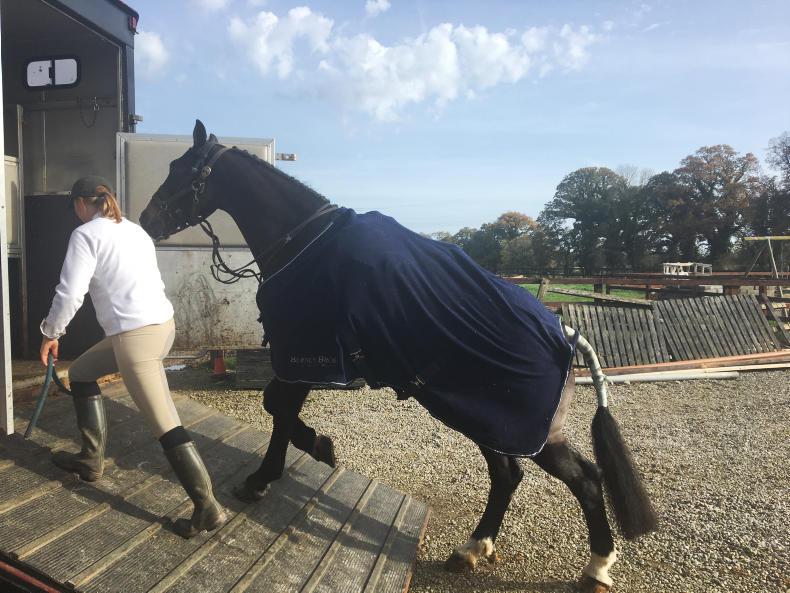
AFTER CARE
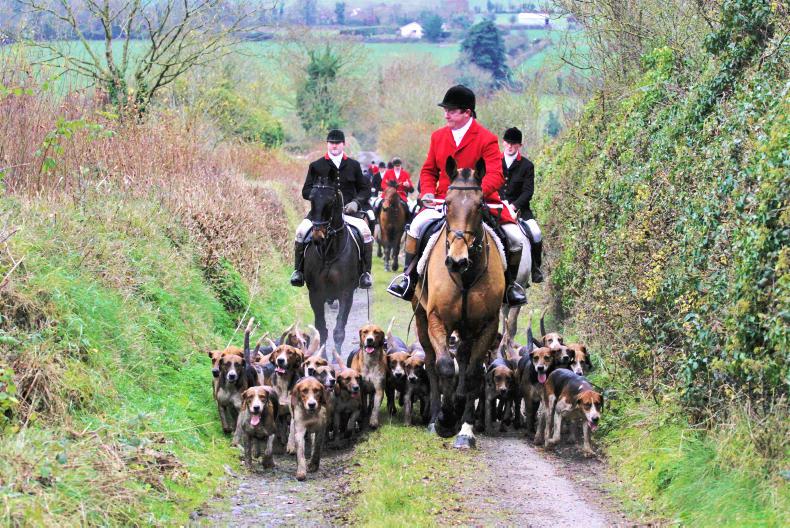
On a dry day, horses should arrive back to the meet cool and dry after walking the last mile or so. On a wet day it is best to trot the last mile, so that the horse is still warm before being loaded. Untack your horse as quickly as possible and gently sponge any sweaty areas with a wet sponge. Remove any excess water from the coat with a sweat scraper and quickly put on your horse’s cooler rug so that they don’t get a chill.
Muddy legs should also be washed down and checked for any cuts or injuries, before putting on the remaining travelling gear. Once loaded, the horse should be offered a small drink and the haynet should be tied up for the return journey.
Once home and unloaded, remove the travelling gear, brush off the horse and replace the horse’s cooler rug with a dry one, if necessary. Check the horse over again for any signs of injury such as swelling, heat or tenderness. Don’t forget to take the plaits out of the horse’s mane.
If the horse is cool and dry, it should be rugged up for the night. The horse should now be offered ad-lib water and hay.
After an hour, return and check that the horse has not broken out in a cold sweat – this should not happen if the horse was clean, warm and dry when left. If this does happen rub the horse over with a towel and, if the evening is suitable, walk the horse out. If this is not possible the horse will need to be towel dried and left with a cooler rug. He should be checked every half hour until fully dry and settled.
When all is well the horse should be rugged for the night and should be given their hard feed.
THE DAY AFTER
If the horse is well and has eaten up, it should be fed, hayed and watered as normal.
The rugs should be removed and the horse should be checked over fully and groomed.
Check especially for swelling or galls around the girth area, any heat or swelling in the legs and check for loose shoes. The horse should be checked for soundness by being walked and trotted up.
If all is well, the horse can have his rugs replaced and could be turned out, weather permitting or a horse walker used.
Hunting essentials
For the rider
For the horse
PUTTING UP A TAIL
A tail is put up in wet and muddy conditions to keep it clean and to avoid it irritating the horse. A tail can either be tied up in a knot or folded up.
NB: Any tape or bands used should match the colour of the tail, for the purpose of this example I have used white bands and tape to highlight where they should be placed.
Knot
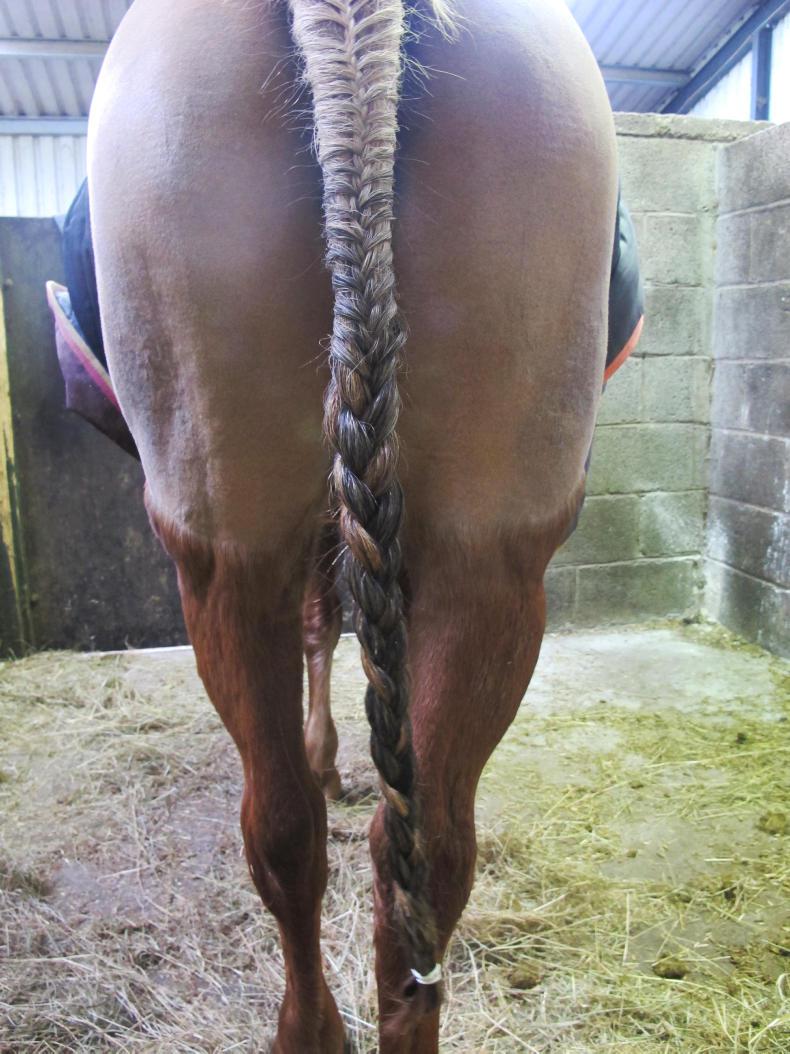
1. The upper part of the tail is usually pulled. If your horse’s tail is not pulled you will have to plait it down from the top. Plait the tail firmly, right down to the end, and secure it with an elastic band.
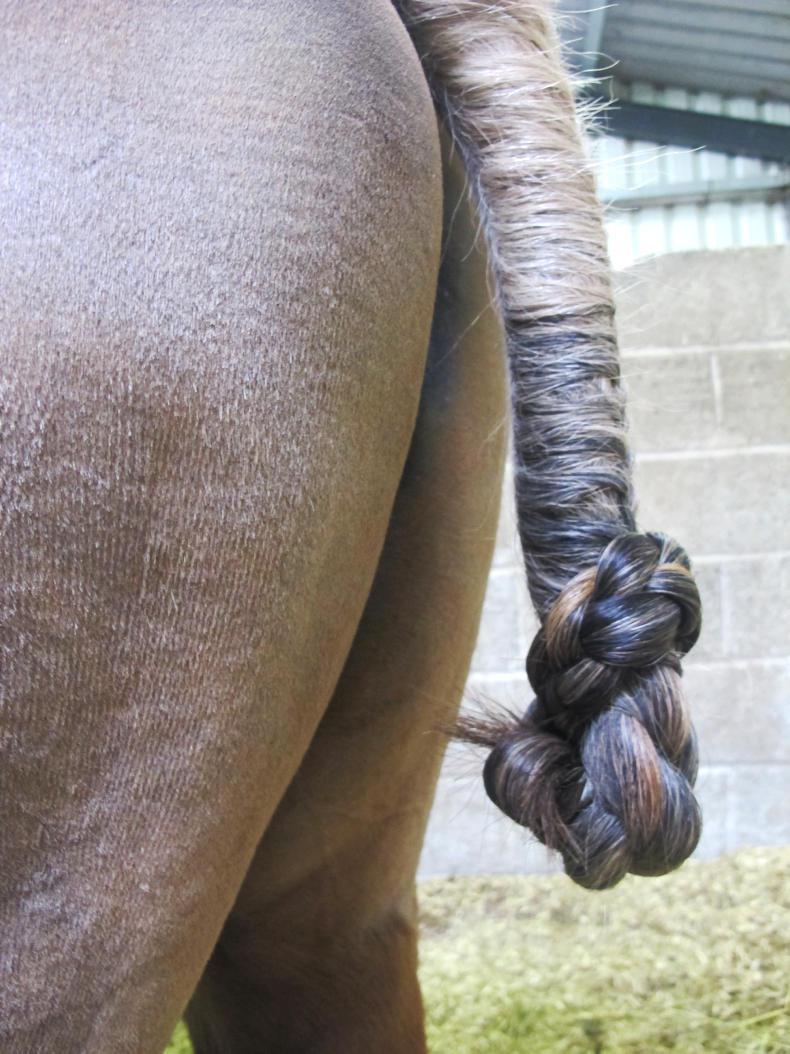
2. Knot the tail as neatly as possible.
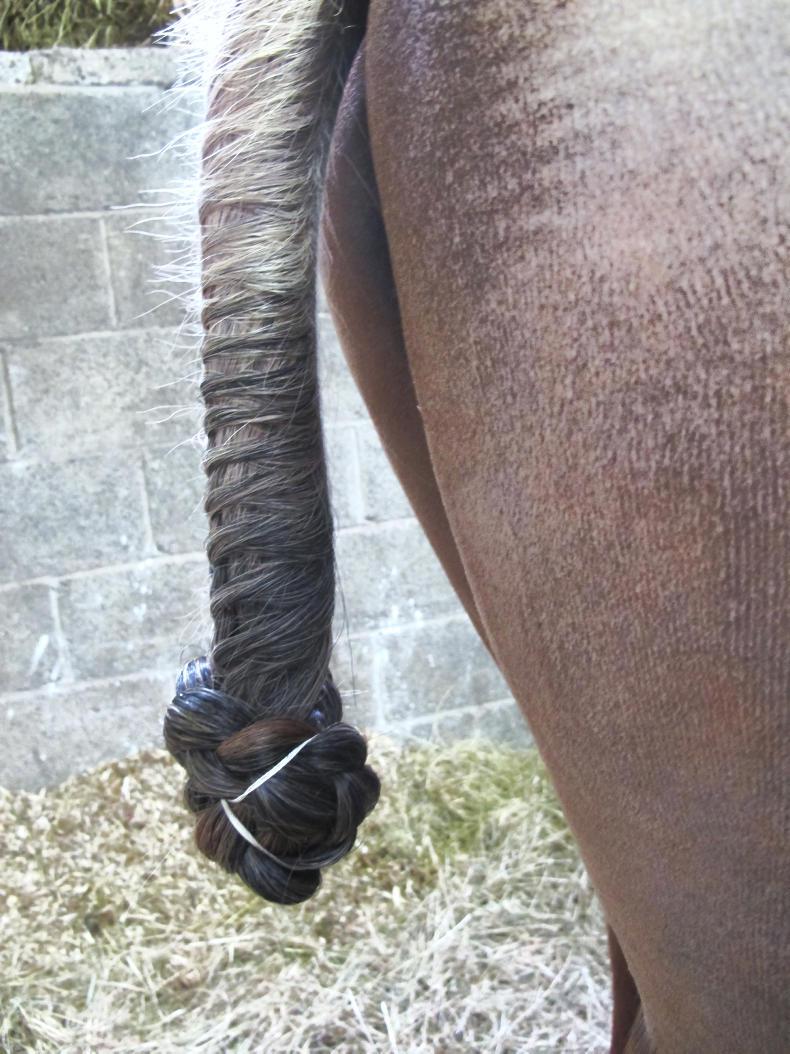
3. Secure the knot with bands. I would advise criss-crossing the bands over the knot to make the shape of an ‘X’. Note - the bands are not wrapped around the dock, as this would reduce circulation to the dock.
Fold
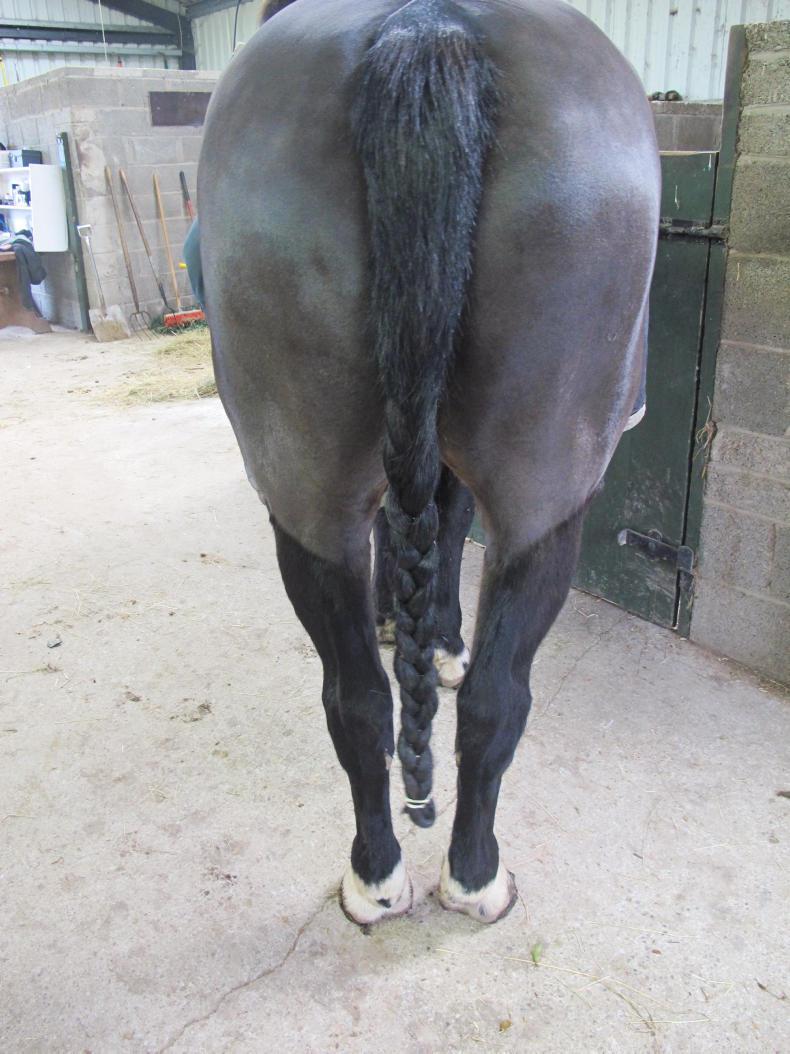
1. The upper part of the tail is usually pulled. If your horse’s tail is not pulled you will have to plait it down from the top. Plait the tail firmly, right down to the end, and secure it with an elastic band.
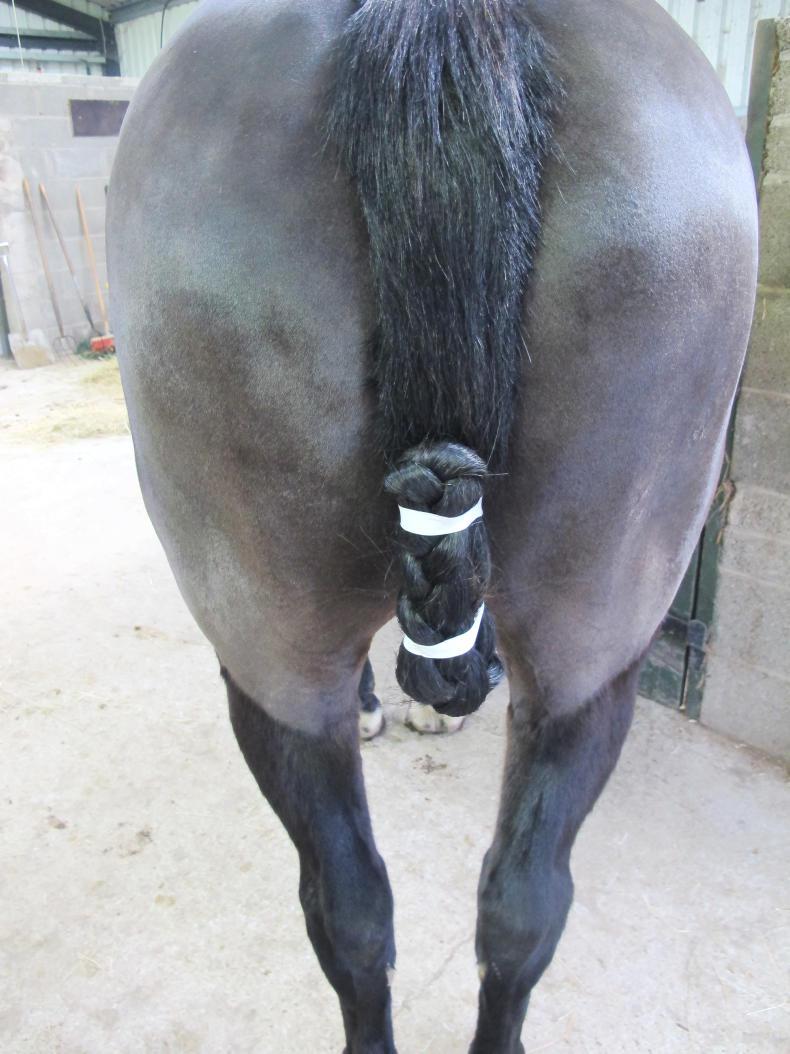
2. The tail is then doubled up and secured by two rounds of tape, one at the top of the fold and one toward the bottom of the fold. Make sure you do not pull the tapes too tight around the dock or you will reduce circulation.